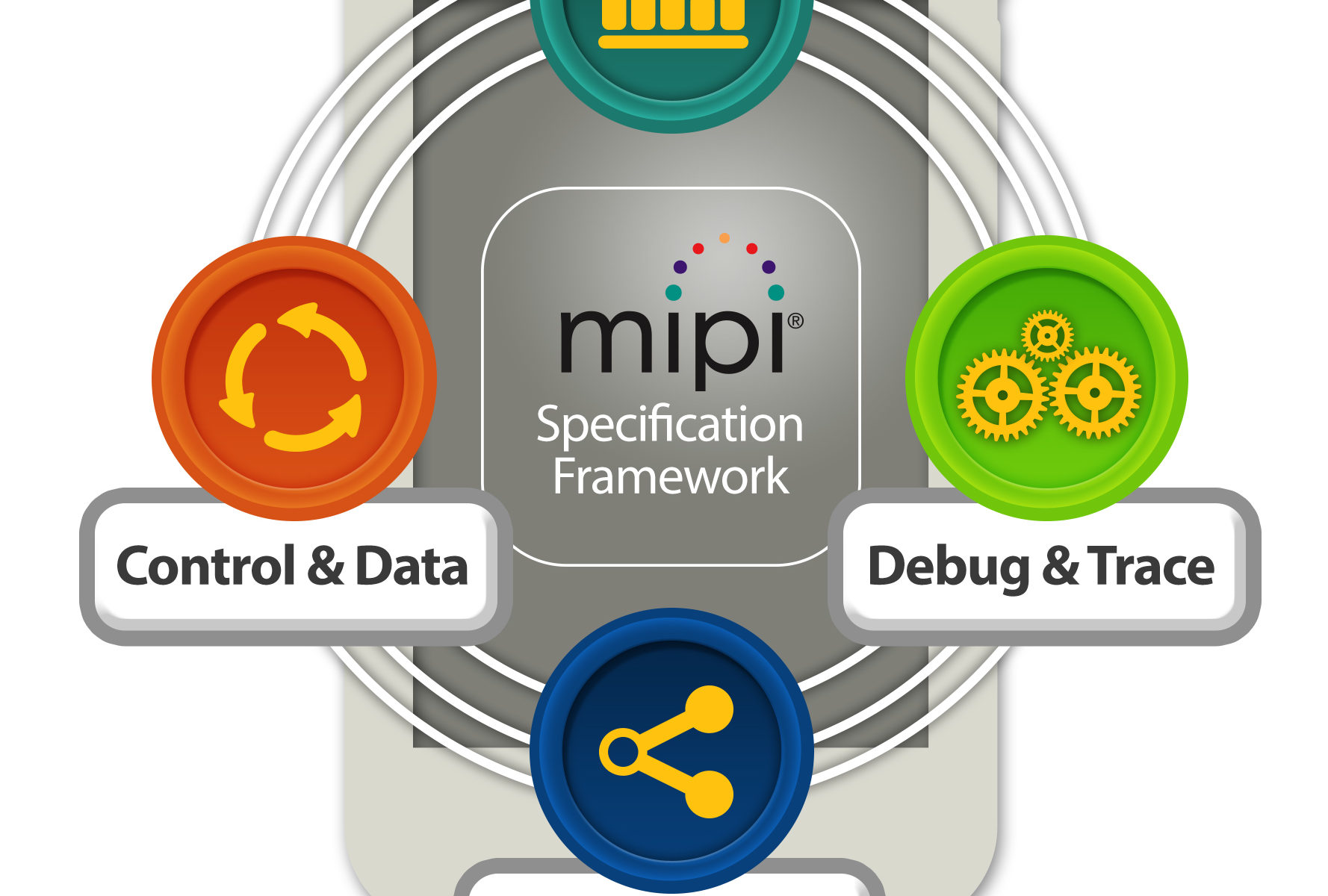The MIPI Alliance (Mobile Industry Processor Interface Alliance) is a global, non-profit industry consortium that develops open interface specifications for mobile and mobile-influenced industries. These specifications standardize the interfaces between components in devices such as smartphones, tablets, cameras, AR/VR headsets, automobiles, IoT devices, and increasingly, laptops and embedded systems.
Founded in 2003, MIPI has become a central force in enabling low-power, high-speed connectivity between cameras, displays, sensors, and processors in modern electronics.
📜 Overview
-
Founded: 2003
-
Type: Non-profit, open membership industry consortium
-
Headquarters: United States
-
Membership: 400+ member companies worldwide
-
Focus: Standardizing high-performance, low-power interfaces for mobile and adjacent markets
🎯 Mission and Goals
-
Develop interface specifications that reduce integration complexity, power consumption, and cost.
-
Promote interoperability across a broad ecosystem of chips, devices, and platforms.
-
Enable scalability across various verticals including mobile, automotive, industrial, medical, and IoT.
🧩 Key Specifications and Protocols
MIPI develops over 50 interface specifications. These are grouped into several categories:
1. Camera Interfaces
-
MIPI CSI-2 (Camera Serial Interface)
-
Most widely used camera interface in mobile and embedded devices
-
Supports high-resolution image sensors and video capture
-
Versions up to CSI-2 v4.0 (2021) support multi-gigabit speeds and RAW image formats
-
2. Display Interfaces
-
MIPI DSI/DSI-2 (Display Serial Interface)
-
Connects processors to displays (smartphones, tablets, AR/VR)
-
DSI-2 supports VESA DSC compression and variable refresh rates
-
Common in AMOLED, LCD, and microLED displays
-
3. PHY Layers (Physical Layer Standards)
-
MIPI D-PHY: Used with CSI-2 and DSI; supports up to 4.5 Gbps/lane
-
MIPI C-PHY: Alternative to D-PHY; better signal integrity over fewer pins
-
MIPI M-PHY: Used in high-performance applications like UFS and PCIe
-
MIPI A-PHY: Automotive PHY for long-reach (up to 15 meters) high-speed connections
4. Chip-to-Chip Interfaces
-
MIPI UniPro: Transport layer protocol; used in UFS (Universal Flash Storage)
-
MIPI I3C: Successor to I2C; more efficient for connecting sensors
-
MIPI SLIMbus: Audio and control interface in mobile systems
-
MIPI SoundWire: Simplifies audio component connectivity
5. Automotive
-
MIPI A-PHY: Robust, long-reach (15+ meter) automotive serializer-deserializer (SerDes) interface
-
Built for cameras, radar, LiDAR, displays in ADAS and autonomous driving
-
Compatible with CSI-2 and DSI protocols
🚗 Industry Applications
| Market | Use of MIPI Specifications |
|---|---|
| Mobile Devices | Cameras (CSI-2), Displays (DSI), Audio (SoundWire), Memory (UFS via M-PHY), Sensors (I3C) |
| Automotive | In-vehicle cameras, radar, and displays using CSI-2/DSI over A-PHY |
| AR/VR | Low-latency, high-resolution camera and display interfaces |
| IoT/Edge | Efficient sensor interfacing using I3C, reduced pin count |
| Wearables | Power-efficient and compact form factors using CSI-2, D-PHY |
| Laptops/Tablets | Integration of mobile-grade cameras and sensors using MIPI |
📶 Technology Advantages
-
Low Power Consumption
-
High Bandwidth per Lane (up to 32 Gbps with A-PHY and C-PHY)
-
Fewer Pins and Smaller Form Factors
-
Scalable Architecture for Broad Use Cases
-
Robustness for EMI, EMC, and Automotive Safety Standards
📚 Membership and Ecosystem
Member Categories:
-
Promoter Members: Founding and key contributors (e.g., Arm, Intel, Qualcomm, Samsung, STMicroelectronics, Synopsys)
-
Contributors: Help develop specifications
-
Adopters: Use and implement specifications
Member Companies Include:
-
AMD, Apple, Bosch, Intel, MediaTek, NVIDIA, NXP, Sony, Texas Instruments, Synopsys, Cadence, TSMC
🛠️ Compliance and Tools
-
MIPI Alliance does not directly certify products, but encourages self-testing and ecosystem-driven compliance.
-
Test and debug tools provided by:
-
Keysight Technologies
-
Teledyne LeCroy
-
Rohde & Schwarz
-
Cadence and Synopsys (for PHY IP validation)
-
🧱 MIPI IP and Silicon Integration
MIPI standards are implemented in IP blocks licensed by semiconductor IP vendors, and are included in SoC designs through:
-
MIPI PHY IP (D-PHY, C-PHY, A-PHY, M-PHY)
-
Protocol Controllers (CSI-2, DSI-2, I3C)
-
Verification IPs for pre-silicon simulation
-
Bridge and Retimer Chips for automotive and industrial use
🔮 Emerging Trends and Developments
-
MIPI I3C Basic adopted by JEDEC for memory module management
-
A-PHY adoption in automotive ADAS platforms (Mercedes, Tesla, Toyota suppliers)
-
6G and Edge AI driving expansion of CSI-2/DSI-2 into new performance realms
-
MIPI security extensions to protect sensor and display data integrity
-
Standardization with UCIe and chiplet packaging ecosystems
🧾 MIPI vs Other Interface Standards
| Feature | MIPI CSI/DSI | LVDS | HDMI | USB |
|---|---|---|---|---|
| Power | Very low | Moderate | High | Moderate |
| Distance | Short (a few cm) | Medium | Long | Long |
| Use Case | Internal mobile/video links | Industrial display | Consumer AV | General I/O |
| PHY | D-PHY/C-PHY | Differential pairs | TMDS | NRZI/High-Speed Differential |















Quantum Computing Technologies and Challenges